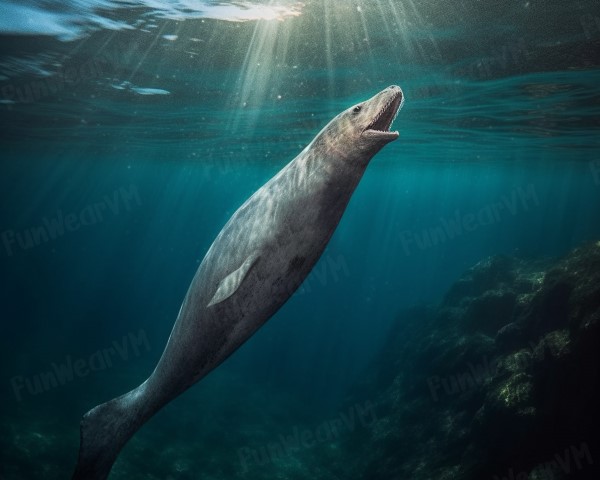
Tizheruk is a mythical creature that is said to live in the cold waters of the Bering Sea, near King and Nunivak Islands. The Tizheruk is a large serpent-like animal with a two-meter-long head and a tail with a flipper. It is feared by the local Inuit people, who claim that it can snatch people off piers without being noticed. In this blog post, I will tell you more about the Tizheruk, its history, and its possible explanations.
The Tizheruk is a part of the Inuit religion and folklore. The name Tizheruk comes from the Inupiaq language and means “the long-tailed one”. The Tizheruk is also known as Pal-Rai-Yûk or Tisikpuk in other dialects. The Inuit have a taboo regarding the Tizheruk and do not like to talk about it. They believe that it has supernatural powers and can cause misfortune or death to those who encounter it. Some stories say that the Tizheruk can change its shape or size, or even become invisible.
The first recorded account of the Tizheruk was made by ethnologist John White, who collected information from the inhabitants of King Island in 1980. He communicated his findings to cryptozoologist Roy P. Mackal, who published them in his book Searching for Hidden Animals. White reported that the islanders had seen the head and neck, and sometimes the tail, of the Tizheruk rising out of the water. They said that it could rise up to 7 or 8 feet high and had a snake-like head. They also said that they could attract it by tapping on the insides of their boats.
Mackal later received more information from some Coast Guard personnel stationed nearby, who told him that the Tizheruk was rare but real, and that the Inuit were afraid of it. One of them said that a woman had been killed by a Tizheruk recently, when it capsized her boat. Mackal speculated that there were two types of unknown marine animals in the Bering Sea: one was a long-necked eared seal similar to the leopard seal of Antarctica, and the other was a zeuglodon, an extinct whale-like animal.
There are several theories about what the Tizheruk could be. Some cryptozoologists suggest that it is a surviving zeuglodon, a prehistoric whale that had a long snout and teeth. Zeuglodons lived from 45 to 33 million years ago and could grow up to 18 meters long. They are related to modern whales and dolphins, but they had a more flexible spine and could bend their necks. However, there is no evidence that zeuglodons ever lived in the Arctic waters, and they are unlikely to have survived until today.
Another possibility is that the Tizheruk is a pinniped, a group of animals that includes seals, sea lions, and walruses. Some pinnipeds have long necks and can raise their heads out of the water. One example is the leopard seal, which lives in Antarctica and can grow up to 3.5 meters long. It has a large head with powerful jaws and teeth, and a tail with a flipper. It is an aggressive predator that can attack humans and other animals. Some cryptozoologists think that the Tizheruk is a northern counterpart of the leopard seal, or a related species that has adapted to the cold environment.
A third option is that the Tizheruk is a giant worm-like or caterpillar-like animal. Some descriptions of the Tizheruk resemble those of other mythical creatures from around the world, such as the Mongolian death worm or the Australian bunyip. These creatures are said to have long bodies with segments or rings, and sometimes flippers or legs. They are often associated with water sources and can cause harm or death to those who approach them. However, there is no scientific evidence for such animals existing.
The Tizheruk is a fascinating mystery that has intrigued many people for decades. It is possible that it is based on real sightings of known or unknown animals, or that it is a product of imagination and folklore. Whatever it is, it remains one of the most elusive and mysterious creatures of Alaska.
References:
- Mackal, R.P., Searching for Hidden Animals: An Inquiry into Zoological Mysteries (1980)
- Encyclopaedia of Cryptozoology: Tizheruk (2021)
- Alaska folklore: Five mythical creatures of the Last Frontier (2012)
- Wikipedia: Leopard seal (2021)
- Wikipedia: Tizheruk (2021)
